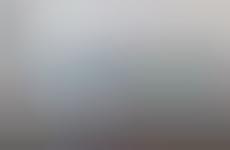
Just a few materials are needed in addition to the contact paper to help the application process be as smooth (literally!) as possible.
#Cover desk top with mdf how to#
(I intend to make a video showing how to apply it to another, smaller tabletop so I’ll update the post later on.) Not bad by any means but definitely not my style (I like light and bright). The contact paper is normally forgiving so you can remove and re-apply small portions of it to get it into place. I know sometimes applying contact paper or sticky back vinyl can be a finicky process but stick with it. The price is really great for the quality as well. It’s also quite wide so depending on the width of your surface area, you can have a seamless application. I’ve been using this marble contact paper for some time now and I absolutely love how thick and realistic looking it is. This means I may earn a small commission if you make a qualifying purchase, at no additional cost to you. (This post contains some affiliate links. It’s also been used a lot by renters especially since it can be removed at any time. Marble contact paper is such an easy and budget-friendly way to add some glam to your countertops, whether in the kitchen or bathroom, shelves, tables, cabinets and even storage boxes. I love the marble look (I mean…who doesn’t!) and I really didn’t like the current orangey granite surface of the desk.
#Cover desk top with mdf upgrade#
In fact, DIYers can create custom trim, wainscoting, or furniture partly with MDF and partly with wood, and once painted, the final piece will blend seamlessly together.Earlier this year, I decided to upgrade my desktop with marble contact paper. After a coat of color, MDF will look just like any other painted wood. When project is completely dry, replace any hardware you may have removed and step back to admire your work. For example, painted cabinet doors could benefit from an extra layer of protection from wear and tear MDF crown molding, on the other hand, will be out of reach and therefore not necessitate a sealer. Then, apply preferred sealer (polyurethane, lacquer, wax, etc.) if you expect your MDF project to get daily use in order to preserve your paint job. If you spot any patchiness, cover the entire MDF project with another layer of paint. Once the first coat of paint feels dry to the touch, assess if your work needs a second coat. You can use your preferred paint on primed MDF, and you can apply the paint finish with your preferred applicator, be it a brush, roller, or spray gun-whichever best suits the project.

Use a brush, roller, or spray gun to apply the primer-whichever is appropriate for the project. Avoid water-based primer, as it may cause the wood fibers to swell, resulting in a surface that appears to have a raised grain (no matter how much effort you put into sanding). Prime the MDF with a solvent-based primer, such as Zinsser ( buy online) or KILZ ( buy online). Sand the entire piece with 220-grit sandpaper, then wipe it all down with tack cloth to remove fine dust and any remaining dirt or debris.

Fill any scratches on the face of the MDF with drywall compound as well, as any mars or scratches will be painfully obvious once painted.

Once it has completely dried, sand edges smooth with 220-grit sandpaper. Seal the edges by running a generous coat of drywall compound over them with your finger.

Whether your MDF project has a factory edge or has been custom routed, the edges must be sealed to accept paint in a way that matches the smoother face of the material.


 0 kommentar(er)
0 kommentar(er)
